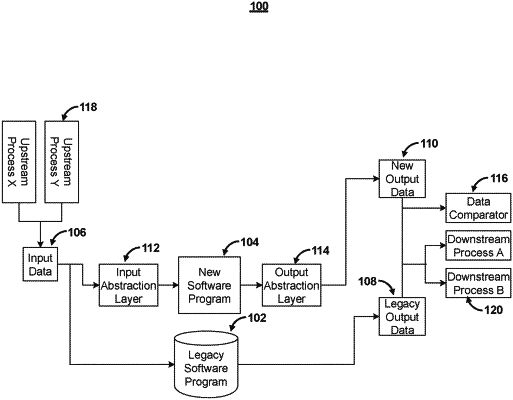| CPC G06F 8/35 (2013.01) [G06F 8/71 (2013.01)] | 15 Claims |

|
1. A system for transforming data from a batch-based legacy software program for processing by a streaming-based new software program, the system comprising:
one or more processors; and
a non-transitory, computer-readable medium comprising instructions that, when executed by the one or more processors, cause operations comprising:
receiving batch information for a plurality of threads to be processed by a new software program, the batch information including for each thread input data and output data captured from a legacy software program during a particular time period;
generating, from the batch information, an information stream based on a data model for the new software program, the information stream including at least some of the input data for the plurality of threads, the data model for the new software program being different from a data model for the legacy software program;
processing, using the new software program, the information stream for the plurality of threads to generate corresponding output data for the particular time period;
comparing the output data from the new software program and the output data from the legacy software program for the particular time period;
based on the comparison, determining that at least one thread has a mismatch between the output data from the new software program and the output data from the legacy software program;
adjusting the data model for the new software program based on the mismatch for the at least one thread;
generating, from the batch information, an updated information stream based on the adjusted data model for the new software program; and
processing, using the new software program, the updated information stream for the plurality of threads to generate corresponding output data for the particular time period.
|